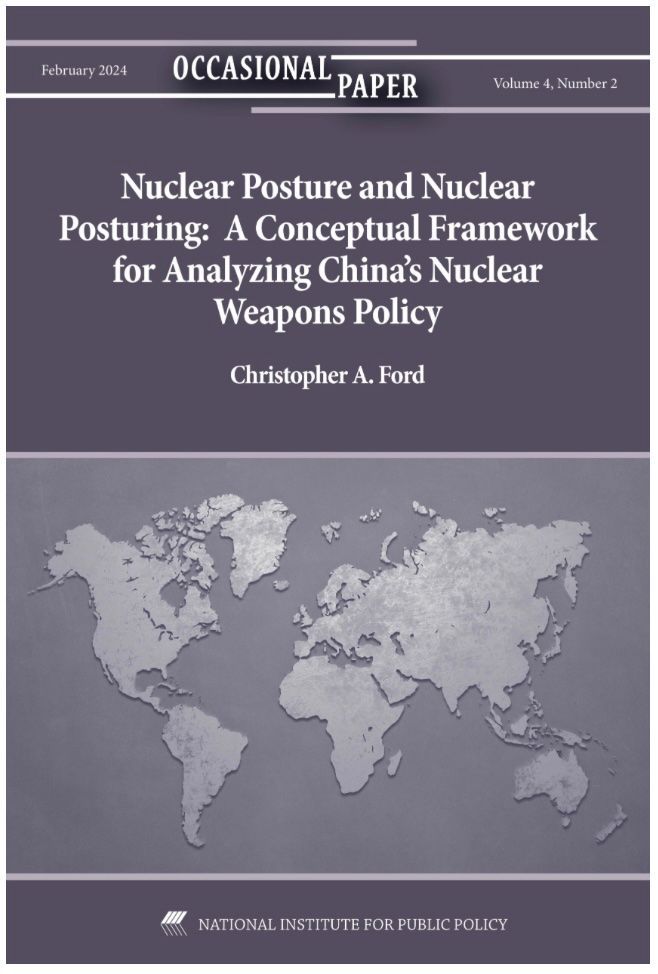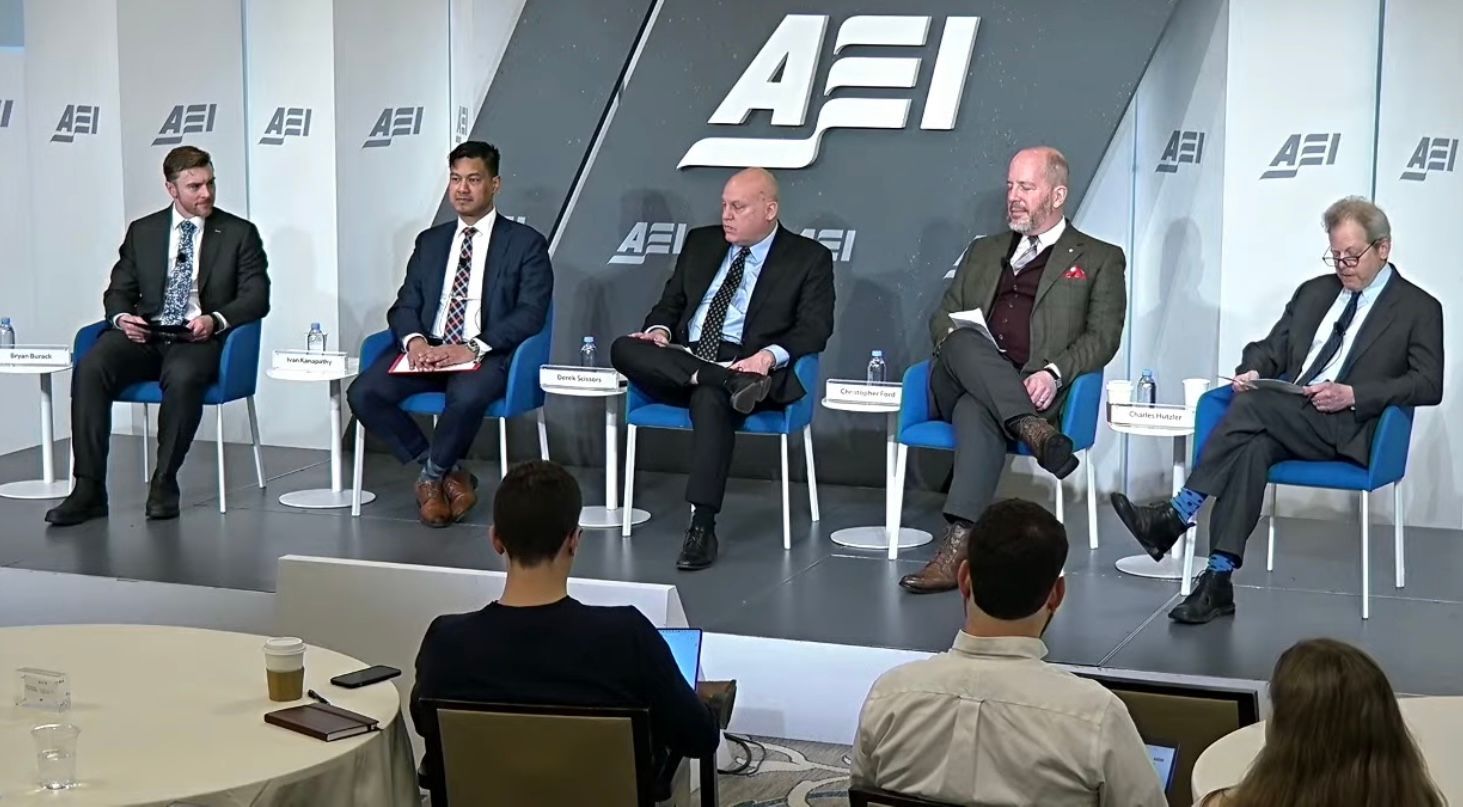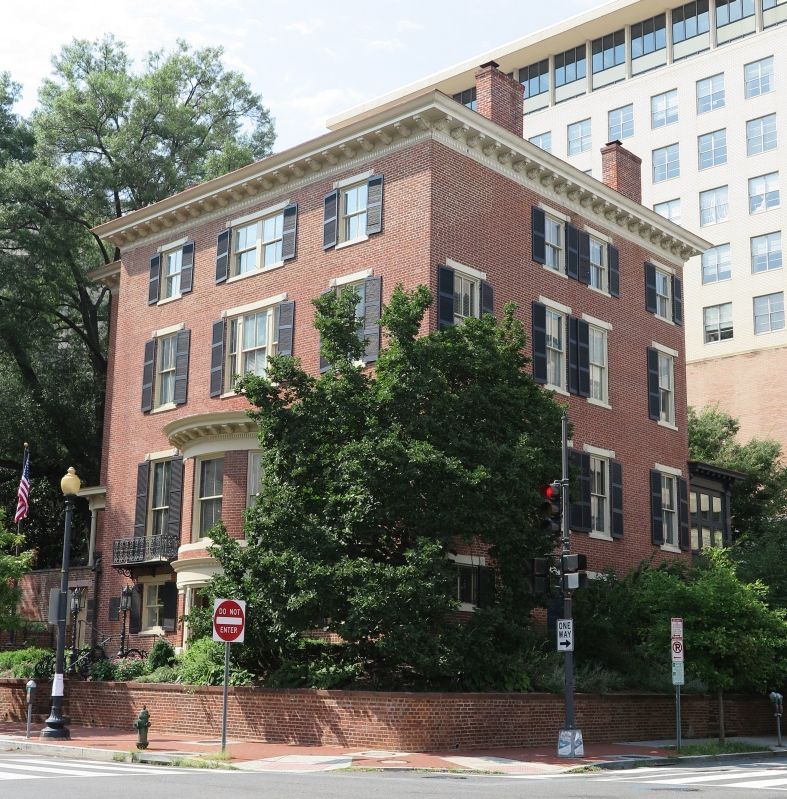The Hon. Christopher A. Ford
New Paradigms Forum -- International Security Policy Since 2009
Thinking about CTBT
Note:
Below appears the text upon which Dr. Ford based his remarks on March 15, 2013, to a Project on Nuclear Issues workshop at the Center for Strategic and International Studies in Washington, D.C. Professor Edward Ifft of Georgetown University also participated as a counterpoint in this discussion.
Good morning, and thanks both to Linton Brooks for his kind introduction and to CSIS for inviting me. Before I go any further, let me make clear that I am here solely in my personal capacity, and not as a result of my current job. Whatever views I express today are entirely my own, and do not necessarily reflect those of anyone else, either in the U.S. Government or elsewhere.
That said, I appreciate the chance to come here and discuss the issue of the Comprehensive Test Ban Treaty (CTBT), which has become a kind of iconic “litmus test” issue for the arms control community – both as a symbol of the aspiration for nuclear disarmament, and as an opportunity to fulminate about the supposed perversity of U.S. conservatives who for years have been at best lukewarm, and more commonly actively hostile, to the CTBT.
You probably won’t be surprised to hear, however, that I think the kind of simplistic morality play elements that so often creep into CTBT discussions are misplaced. Those themes are no doubt useful for mobilizing one’s political base within a niche market in the policy wonk community, and they fit nicely with the conventional wisdom of the sorts of people who end up with arms control-related diplomatic posts in Europe and the developing world, and who never tire of identifying CTBT as a key global priority. But the world is a bigger place than that.
Those who actually possess, work closely with, or depend upon nuclear arsenals, by contrast, are sometimes notably more ambivalent about the issue, and less prone to reflexive CTBT boosterism. For fairness’ sake, therefore, as well as in the interest of serious engagement with these issues, I think it’s worth taking a more sober look at the question.
I. The Concerns Raised in 1999
As I recall it from working on a Senate committee staff at the time, the CTBT’s defeat in the U.S. Senate in 1999 turned in particular on two key issues. The debate there did not concern itself with the good opinion of international disarmament diplomats, or any imaginings that the world would flock to our banner on topics such as nonproliferation just because we had ratified that Treaty, but instead focused rather on: (a) the issue of how CTBT might affect the reliability of the U.S. nuclear stockpile; and (b) how vulnerable the CTBT framework would be to cheating.
The former question – about reliability – revolved around concerns about the ways in which some feared that without the option of nuclear explosive testing, the American arsenal might “rust to ruin” and thereby lead to all but accidental U.S. nuclear disarmament. Our nuclear weapons were not designed to remain reliable for very long periods of time in a no-testing environment, after all, and indeed had been built to meet very fine performance margins and certification criteria optimized for apocalyptic global warfighting against the Soviets, rather than for long-term reliability without periodic testing. (In nuclear weapon design terms, these are very different requirements, and to some extent are incompatible.)
As a consequence, it was feared that CTBT would have a disproportionate impact upon the U.S. arsenal, causing our weapons to degrade faster over time than the perhaps simpler and thus more robust designs that might be possessed by others.
(Making matters worse was the fact that while others, notably the Russians, have long had a weapons maintenance policy of ongoing periodic remanufacture of nuclear devices, we have – perhaps unwisely – chosen a path of one-time manufacture, followed by indefinite maintenance with heroic “life extension” spasms at multi-decade intervals. This is probably a more technologically demanding path, and our feast-and-famine approach to weaponeering makes it especially hard to maintain the human capital that is so important to a creditable weapons program.)
Even if everyone’s arsenals aged at the same rate, moreover, there was concern that the Treaty would produce a creeping disarmament before the world could be shown to have learned how to have peaceable great power relations without nuclear weaponry. Then as now, the CTBT was generally depicted and promoted by its supporters as a disarmament rather than an arms control or nonproliferation instrument, and a good number of Senators took advocates at their word on this.
As for the cheating concern, there was much discussion about the ways in which the CTBT might fail actually to stop all nuclear testing. While there was little doubt in Senate circles that if we ratified the test ban we would comply with it – and that we would probably be unable to keep things secret even if we didn’t – there was less faith in other possible CTBT States Party. If some degree of clandestine testing remained possible, it was feared, those of us in scrupulous compliance with the CTBT might end up at some point subject to strategic surprise by a potential adversary that had developed or improved its arsenal through such secret work – or who had simply successfully maintained its weapons by such means while ours had gradually become inadequately reliable.
As things stood in 1999, these twin concerns were enough to sink CTBT in the Senate. Nor was this any mere spasm of hawkish, conservative pique. So serious were these reliability and cheating concerns that CTBT marked the first and only time that the liberal Republican Senator Richard Lugar ever voted against an arms treaty.
II. Issues Today
So that was 1999, but where do things stand today? Well, the usual argument is that both of these concerns have been successfully addressed in the intervening years – making it finally time for the United States to ratify the CTBT. I would suggest, however, that this is not inarguably so: there remain real reasons for concern.
Let’s talk first about reliability. It is certainly true that the U.S. “stockpile stewardship program” (SSP) – in some ways quite a heroic scientific effort to tackle reliability problems without testing, through the development of sophisticated new tools and computer models – has gained us much insight into the dynamics of nuclear explosions and increased our confidence levels in a no-testing environment. Our ability to handle potential future reliability problems seems clearly to have been much improved.
The obvious question, however, is whether this improvement has been enough , and whether we can maintain adequate confidence levels into the indefinite future. I’ve heard no one suggest the likelihood of any real worries over the short or medium term – at least if if we undertake weapon Life-Extension Programs (LEPs) as currently planned, and especially if we have the moral courage and can find the money to incorporate reliability factors into the LEP process. Our current knowledge has clearly been good enough to make U.S. officials comfortable with the indefinite continuation of our existing testing moratorium.
But that’s a policy moratorium, not a presumptively permanent legal prohibition, and therein lies the rub.
Whatever real reliability issues remain relate to the longer term. In this regard, it’s worth remembering that no serious observer thinks there is any chance at all of a nuclear weapons “zero” – if indeed there is any at all – for a very long time. President Obama has famously said that abolition may not occur in his lifetime, while Secretary of State Kerry in his confirmation hearings suggested that “zero” could take hundreds of years. With such things coming out of the lips of the seniormost officials in a resolutely pro-disarmament administration headed by a man given the Nobel Peace Price on the strength of his disarmament policy, the real CTBT question is about how confident we are able to feel about testing-free stockpile stewardship over this kind of enormously elongated time frame. Through this lens, it is not so easy to be sanguine about a complete test ban.
It is worth pondering the implications of such timelines. We are already designing a follow-on ballistic missile submarine, for example, that is likely to be in service until the late 21st Century. What will go atop its missiles? One of our current warheads designed and built in the 1970s or 1980s, and kept in stasis until then like Rip van Winkle? Or a new device, the validation and certification of which will have had to have been undertaken done without the use of actual testing by scientists who have today perhaps not yet even been born? And what if “zero” takes longer still? Or, as is perhaps more likely, never arrives at all?
Nor is the question really just about the warheads themselves, even if our stockpile stewardship program could in theory keep our current warhead viable essentially forever. To maintain confidence in the arsenal we would also need to maintain – and to pay for – the infrastructure needed to support this program, and the top-flight scientists, engineers, and technicians needed to do such work in what is still, by most accounts, as much an apprenticeship art as a discipline that can be picked up in the classroom or at the console. Indefinite-duration stockpile stewardship presents formidable physical and human capital challenges, not to mention expensive ones at a time when our ability to fund anything is increasingly constrained by massive government debt and pressure from unconstrained nondiscretionary spending.
It is true, of course, that in theory we could withdraw from the CTBT if our reliability concerns really came to a head – and indeed, potential withdrawal is at least a somewhat more reassuring safety valve that it must have seemed in 1999, thanks to the precedent of the George W. Bush Administration’s decision to withdraw from the Anti-Ballistic Missile (ABM) Treaty in 2002. On the other hand, it is more than slightly disingenuous for members of the international arms control community to invoke the prospect of such U.S. withdrawal as a reason for American conservatives to be comfortble with CTBT, for no one opposed the ABM withdrawal with more vigor and met it with more outrage than those in the international arms control community who today advocate U.S. ratification of CTBT. You can be sure that the arms controllers would be no less opposed to U.S. CTBT withdrawal and resumed testing if that question ever came up. They clearly don’t really see withdrawal as a safety valve, and are firmly committed to a truly permanent ban.
It is something that the ABM Treaty now offers a withdrawal precedent, therefore, but this isn’t an entirely reassuring answer to persistent concerns about reliability – and conservatives have no reason to take the disarmament community very seriously as it makes tactically expedient gestures toward the theoretical possibility of withdrawal as a way to promote CTBT adherence.
So what about the cheating issue? In many ways there has been much progress since 1999 on this point as well. The verification-focused CTBT Organization (CTBTO) is vastly more capable and better developed today than it was then, and it is surely much more able to detect testing. As with reliability, however, the question here is not whether or not there has been progress – for there has – but instead whether that progress has been, or even can be, reassuring enough.
With regard to nuclear weapons proliferators, it is worth noting, the CTBTO has never really been tested. It is certainly true that it appears to have detected the North Koreans’ nuclear tests. Pyongyang, however, never tried to conceal these explosions – and indeed, seems to have intended them to be widely known as part of its ongoing game of strategic signaling and coercive diplomacy vis-à-vis the rest of the world. No effort was made to test secretly in the ways that concerned the Senators who opposed CTBT in 1999, so it isn’t really known whether the sorts of techniques discussed then as possible means of secret CTBT cheating would work today.
More worryingly, at least if you believe accounts appearing in the 2009 report of the Strategic Posture Review Commission and (remarkably) in some Russian media accounts, CTBTO apparently has been entirely unaware of an ongoing Russian campaign of very-low-yield nuclear testing. (Such efforts are also reportedly possible in China, by the way.)
Such accounts may somewhat shift the locus of CTBT compliance concerns from “entry-level” proliferators to great-power cheating and impact upon longstanding nuclear rivalries, but the question is no less concerning for all that. Arguably, in fact, cheating by existing possessors seeking to maintain or modernize their arsenals under false cover of test ban compliance might ultimately be a more important issue. (After all, essentially all countries not already having nuclear weapons are already effectively subject to a test ban by virtue of being subject to the Nuclear Nonproliferation Treaty, which prohibits the possession of nuclear explosive devices in the first place.)
This issue of great-power compliance is new to CTBT discourse, at least publicly, but it highlights the likelihood that cheating questions will remain highly salient in any future Senate test ban debates. At the very least, I would think, such concerns would seem to demand a fairly thorough and explicit discussion of the potential implications of ongoing low-yield testing. What could one power ( e.g., Russia or the People’s Republic of China) be able to learn or be able to do by such means? What would be the implications over time if one or more parties had ongoing access to such testing while another, more scrupulous party did not? In any CTBT debates that are yet to come, Senators would surely wish to know a lot more about what they are being asked to countenance and what its long-term implications might be, especially since the Treaty doesn’t actually define exactly what is meant by a “test” in the first place.
III. Actual Impact of CTBT
It is presumably true that the CTBT, if it came into force, would make nuclear test explosions less likely by virtue of prohibiting them, and would thus make the development or improvement of nuclear weaponry more difficult. One should not oversell the benefits of the Treaty, however, by pretending that it would be more complete and effective than is likely actually to be the case.
The CTBT, for example, would not stop all yield-producing testing – and therefore nuclear weapons development, especially by the more sophisticated states – because it is apparently quite possible for very-low-yield tests to be conducted without CTBTO detecting them, and in any event the Treaty does not have a clear definition of “test.”
The CTBT would also not entirely stop the development of nuclear weapons, either by proliferators or existing possessors, using designs that are not felt to require testing:
- Some design options are probably indeed robust enough to be considered utterly reliable without ever testing them. The U.S. “gun-type” uranium weapon used on Hiroshima, for instance, was not tested beforehand, its designers apparently having full confidence in that design even in an era of only very rudimentary nuclear weapons knowledge. It is generally assumed that design validation of this type of device – which was, by the way, also the type of nuclear weapon developed and actually built by apartheid -era South Africa in the 1980s – does not require testing.
- Additional testing is arguably also not required to the extent that one builds designs that have already been tested. The designs reportedly shipped around the world by the A.Q. Khan proliferation network, for instance, were in effect pre-tested by China and/or Pakistan. A proliferator might well conclude that this constitutes validation enough to forego further testing.
- It is also conceivable that proliferators might conduct a collaborative test such that a known test event in one country might end up providing the testing antecedent for a second state’s nuclear program. If press rumors of the presence of Iranians at North Korean tests turn out to be true, something along these lines could already have been taking place.
- Nor is there any guarantee that nuclear weapons development work could not be done without any testing, solely through the use of “stockpile stewardship”-type computer simulation and analytics. It is not clear that such weapons design using merely “virtual” explosive testing could meet the notoriously persnickety design-validation standards insisted-upon by today’s U.S. nuclear weapons establishment. Future leaders, however – or foreign ones – might be less demanding in their requirements, especially if this were the price to be paid for some potentially significant strategic advantage over adversaries armed with aging and questionably reliable designs (or no weapons at all).
(This last point is, of course, a potentiality with mixed implications. If it were clear that non-testing weapons development were still possible for sophisticated states, this could help lessen fears U.S. conservatives might have about CTBT leading to U.S. disarmament. Indeed, if this were the case – and if they could be persuaded that we had, and were likely to maintain, the political moxie to go down such a road – American hawks might actually come to like CTBT as a tool whereby the nuclear weapons development programs of others would be constrained more than our own. Precisely for such reasons, however, the Treaty would surely seem vastly less attractive to the disarmament community. To multiple non-U.S. nuclear weapons possessors, moreover, it would presumably be in such circumstances an entirely unacceptable instrument. Here I merely speculate, however, since to my knowledge no serious study has been done of nuclear weapons development possibilities in a CTBT-constrained world.)
Additionally, it is still unclear whether concealment techniques of the sort discussed in 1999 would permit a state secretly to conduct testing larger than the extremely low-yield sort already being discussed in connection with ongoing Russian and perhaps Chinese nuclear weapons development. As far as we know, no proliferator has ever tried to conduct a test in complete secrecy.
IV. Conclusion
So what is the net impact of these various points? It might conceivably still end up being the case that, on the whole – and as CTBT proponents insist – a legally-binding test ban is in the United States’ interest notwithstanding these various problems and complications. This argument cannot be made, however, without addressing these issues, and weighing them against whatever the Treaty would accomplish, much more clearly and forthrightly than has been done to date. One might think that CTBT proponents owe us all such candor.
But there is a final problem, too, and that is that the CTBT is extremely unlikely ever to enter into force at all. By its own terms, entry-into-force (EIF) will not occur until the Treaty has been ratified by every country on a long list of countries specified in the document – including not just the United States, but also China, India, Iran, Israel, North Korea, and Pakistan. So long as even one of these states declines to ratify, there can be no CTBT as it is drafted.
The sheer improbability of EIF ever occurring would, or at least should , cast a long shadow over the issue of U.S. ratification. It might perhaps be tempting to flatter ourselves that our “moral example” of ratification would lead all these other holdouts to come into line, but how seriously can this be expected? Not very, I would think. The CTBT will probably never enter into force no matter what we do.
The question for us, therefore, is that given the complications I’ve been discussing, and given the only very distant chance of EIF occurring anyway, is the cause of CTBT really worth all this difficulty and trouble? If we care about reducing nuclear-related dangers and improving international peace and security, is pursuing this Treaty really such a great way to spend down our scarce resources of political and diplomatic capital? I think you’ll find that if there ever is another ratification debate here in Washington, some Senators are rather likely to doubt it.
Anyway, I look forward to our discussions.
Thanks!
-- Christopher Ford



Copyright Dr. Christopher Ford All Rights Reserved






